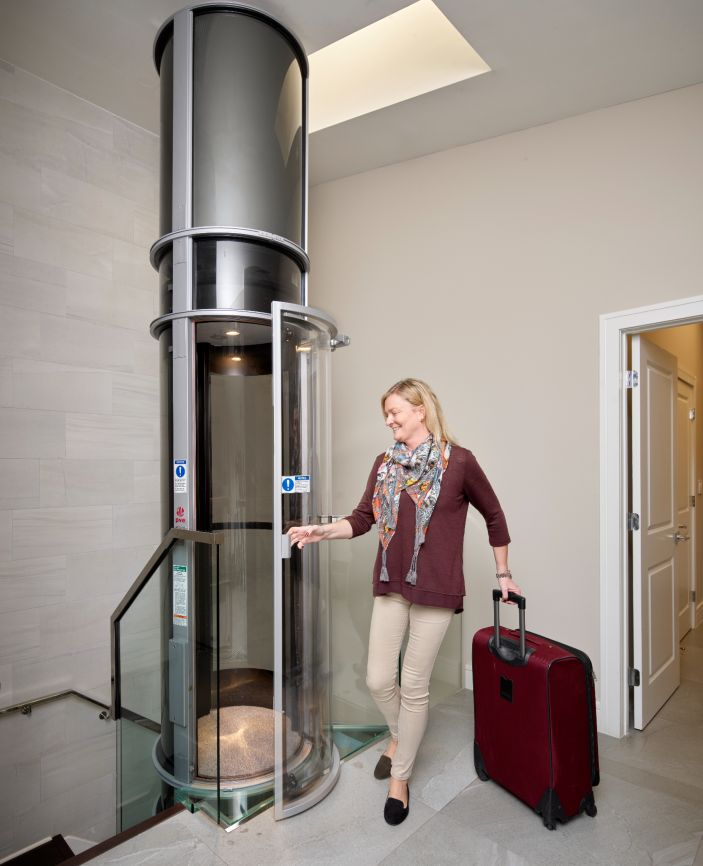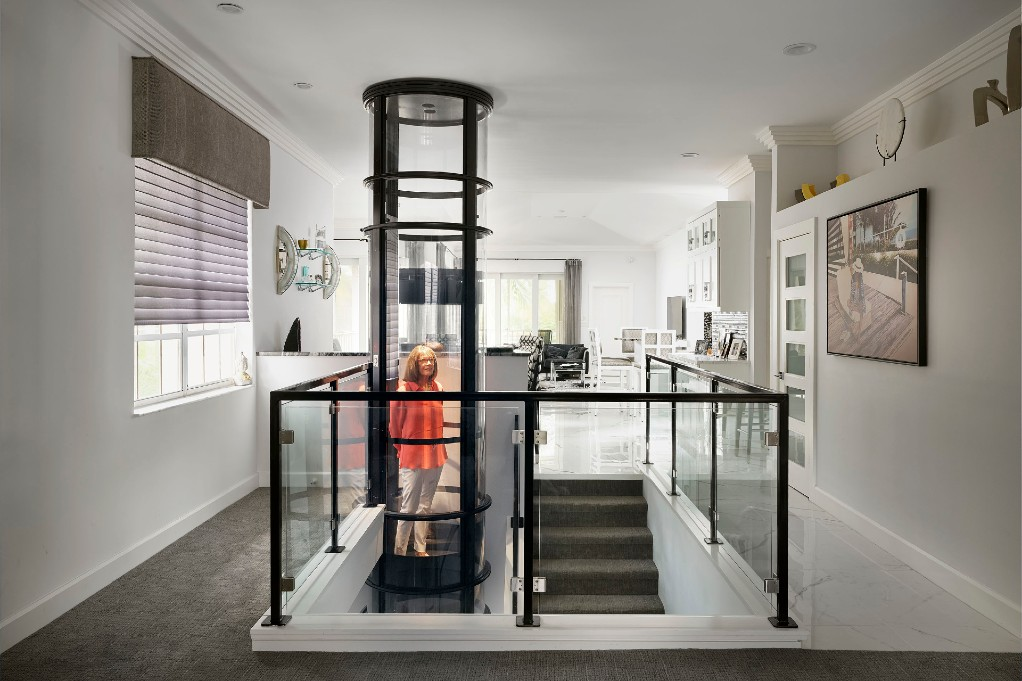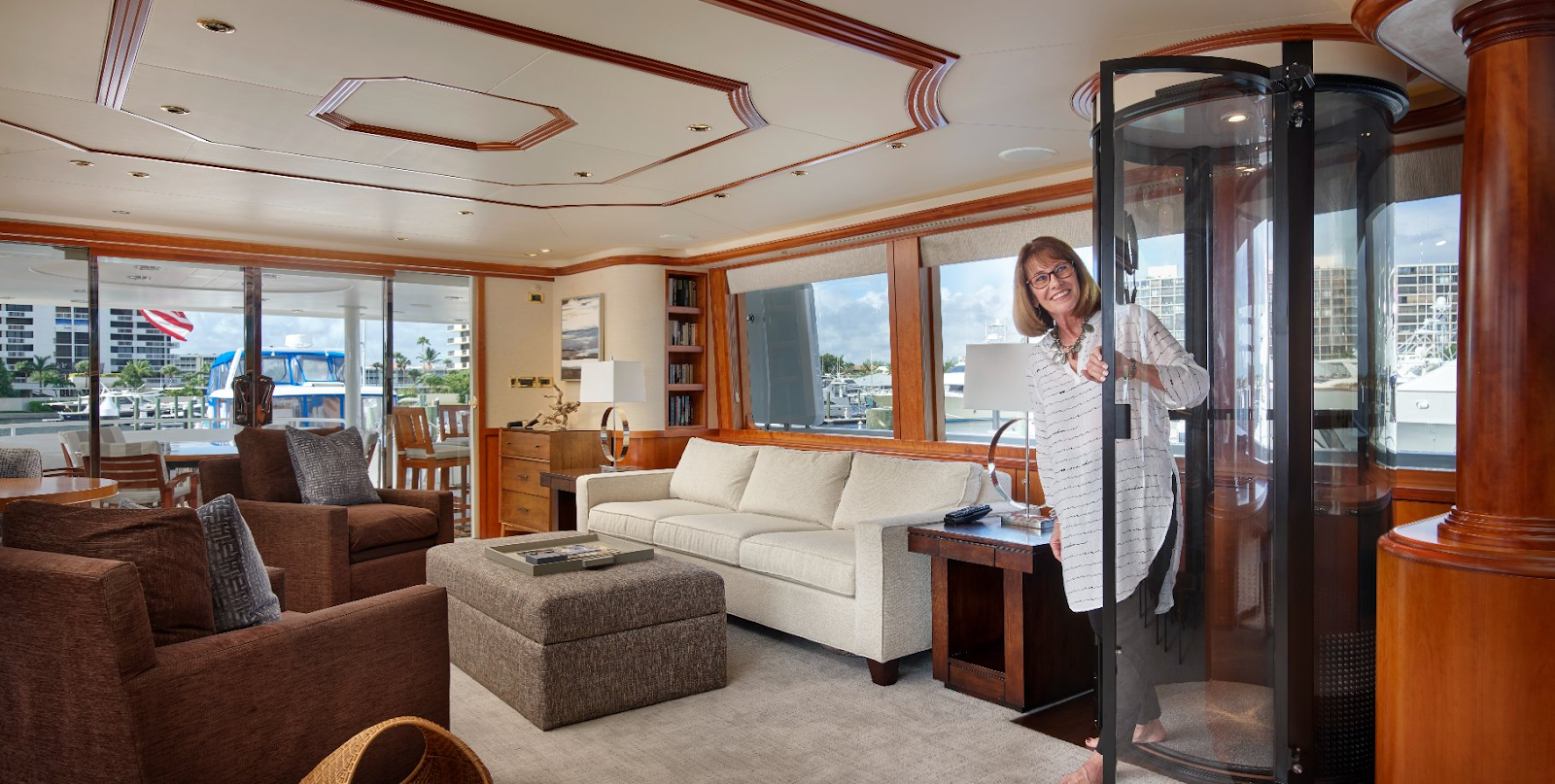The National Elevator Industry estimates that elevators offer 18 billion passenger rides in the U.S. annually. Despite, the safe arrival of billions of passengers, people have a severe fear of elevators, also known as elevator phobia. Other prevalent phobias, such as claustrophobia and agoraphobia, may cause it. In Claustrophobia, people fear enclosed spaces. On the other hand, agoraphobia involves the fear of being trapped without an escape route.
But you should keep in mind that mental health awareness is crucial today. It can significantly impact our overall well-being. Therefore, if you suffer from this, seek help to reduce the stigma caused by mental illnesses.
Another thing that can reduce this fear is adequate knowledge of an elevator. If you don’t know how to ride in a home elevator or you have a fear, you can face the complexities of elevator mental health.

In this blog, you’ll learn about elevator mental health hazards and modern safety features to ensure a smooth ride in an elevator.
What Could be the reason for elevator mental Health?
Despite elevator phobia, people can also fear a panic attack. Imagine mental health as an elevator; sometimes, it moves smoothly between floors. In that case, you experience different levels of emotional states.
However, if an elevator moves roughly, your mental health can get “stuck” between floors. This is a period of distress or stagnation. This highlights the importance of ongoing mental health maintenance and the need for professional help when you are “stuck.”
If you face disturbed elevator mental health, your fight-or-flight response becomes active. The symptoms may be excessive sweating, increased heart rate, sharply elevated blood pressure, hyperventilation, dry mouth, fainting, or nausea.
Top 4 Elevator Mental Health Hazards
Nationally, elevators move billions of people each year. According to the U.S. Bureau of Labor Statistics and the Consumer Product Safety Commission, on average, only about 27 deaths occur. Although the death toll is low, we can still work on it.
Various injuries, minor or severe, occur and often go unreported. Elevator accidents can be overcome with greater public awareness and thorough elevator inspections.
Door Strikes:
The most common elevator injury is when a closing elevator door strikes someone. In the industry, this is called a door strike injury. It generally occurs while someone is entering the elevator. The elevator doors must be closed at a rate that would make injury unlikely. Unfortunately, many elevator inspectors miss or do not consider it. They take it for granted and assume the doors operate within specifications and codes.
Awareness about Door strikes:
Many people do not realize that there are two doors in the elevator. The first is an inside door seen inside the elevator car (called the car door). The second one is a landing door seen when waiting for the elevator (called the landing door).
The car door opens both itself and the landing door. The sensor reopens the door when a person is in front of it. In addition, the landing door sensor can’t sense when a person is in front of it. If the door’s closing speed is too high when it strikes a person, the resulting injury could be severe. Door strikes are a common liability item for building owners, so consult an expert manufacturer for home elevator installation.
Leveling:
Another common issue that leads to disturbed elevator mental health is the tripping hazard. This hazard is related to the “leveling” of an elevator. Elevators can get out of level with regular use. According to current regulations, an elevator must have a one-1/4-inch gap between the car sill and the landing sill.
The elevator can also be up to ½ inches above level relative to the landing sill. If there is a gap between the sills and the difference in level, then people can trip and fall while getting on or off the elevator.
Furthermore, the heels on shoes could also be caught in these gaps. The elevator violates the code if leveling is more than ½ inches out of level. The facility managers need to arrange to have the elevator adjusted.
Entrapment:
Another elevator fear is being trapped in an elevator, also known as entrapment. All buildings must have an emergency evacuation procedure. Hence, people can be safely evacuated from a stopped elevator, even between floors. When facility managers are not trained and do not know the proper procedure for evacuating trapped passengers in an elevator, then fatal mistakes can occur.
Awareness about Entrapment:
When an elevator is above a landing, and a person tries to get out, he loses his balance. He falls back toward the elevator, slipping underneath and into the hoistway. This is the most common elevator accident, resulting in death. Training is required if you want to rescue yourself from an elevator accident.
Fear of Going Down:
If you ride a creaky elevator down, it can be scary. In this elevator, each jolt and noise can increase your heart rate and quicken your breathing. You feel anxious in the small space and worry about getting stuck. You have the fear of the elevator breaking and the doors not opening. As the elevator goes down, your fear of falling gets worse.
In addition, if the elevator moves at high speed, you can be thrown onto the floor or into the walls. This can cause serious injuries, such as spine, back, knee, or head injuries. These accidents often happen when the control system fails to detect that the elevator is going too fast or counterweighs work improperly.
Elevator Safety Measures To Reduce Elevator Mental Health
Like anything else, riding an elevator carries a small risk. However, you can minimize this risk by using safety measures. Thus, the Elevator Escalator Safety Foundation educates people about using elevators and how to ride them safely.
In 1853, the origins of elevator safety date back to when Elisha Otis revolutionized the elevator industry. She implemented a safety brake system that engages in the event of a hoist rope failure. Since then, technological advancements and industry regulations have vastly increased the safety of elevators. After that, they are now considered the safest mode of vertical transportation when appropriately used.

Modern Safety Features to Ensure Elevator Mental Health
1. Multiple Cables:
Today, elevators are supported by multiple cables. Each of these is strong enough to carry more than the weight of a fully loaded elevator car.
2. Emergency Brake System:
The emergency brake and speed governor can prevent the elevator from free-falling if all cables snap.
3. Leveling Mechanisms:
Leveling mechanisms prevent elevator doors from opening while the car is between floors. The doors should only open when the vehicle is aligned correctly at the landing. Consequently, this can prevent the doors from opening between the floors, and you can save your life instead of waiting for help. In addition, it makes it virtually impossible for you to fall down the shaft. The shaft is the space between the elevator car and the outer doors.
4. Emergency Assistance:
Elevator cars have emergency systems in place. These systems include a phone, alarm bells, and intercoms. They allow passengers to call for help in rare events, like when an elevator gets stuck.
When you are in an elevator with no power outage, the elevator should move to the next floor and stop. It opens its doors to let passengers out but will no longer operate while the power is out. However, emergency systems remain operational if the elevator is stuck so that you can call for help.
5. Ventilation:
Calm down. Elevators are not airtight, and stuck passengers are in no danger of running out of air. There are specific ventilation requirements that prevent passengers from running out of air, though it may get stuffy if crowded.
6. Optional Features:
Some of the latest elevators are designated “safe rooms.” They may include air purifying systems to remove toxic gas or smoke from elevator cars. Further, the systems replace it with breathable air to make it the safest place in some circumstances.

Final Thought:
Remember, the more you run from an elevator, the more you’ll entrapped yourself in it. Today, elevators are highly safe for mobility. You can no longer risk your life. However, if your mental distress still persists, take ongoing care and professional support when needed.
Besides, you can improve your home elevator safety using modern features like multiple cables, emergency brakes, and ventilation systems. If you follow these safety measures, you can reduce accidents and alleviate related fears. Hence, you can ensure safe home mobility.
If you want a smooth-operated elevator that can lead to healthier elevator mental health and a more fulfilling life, contact us here.







